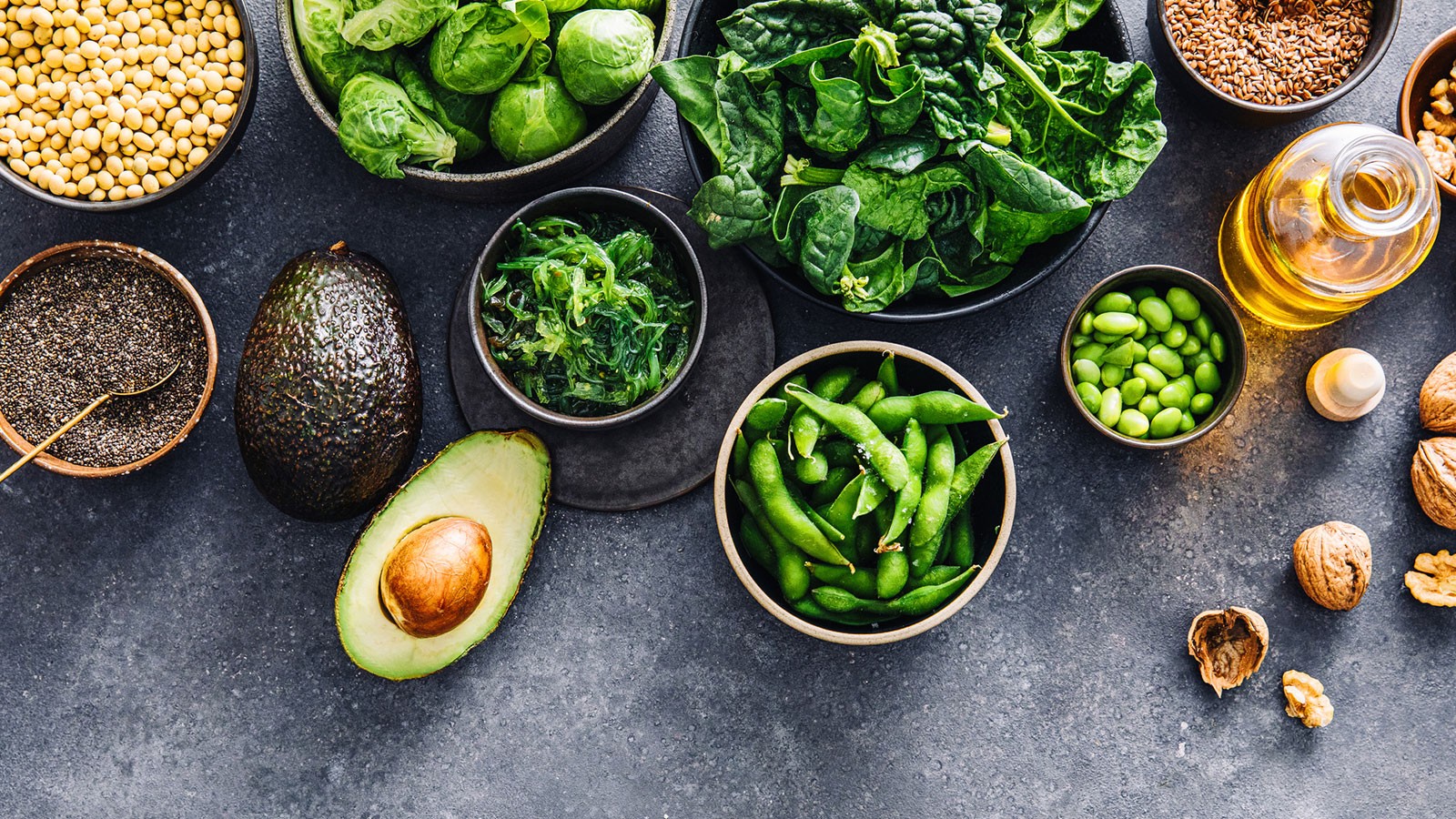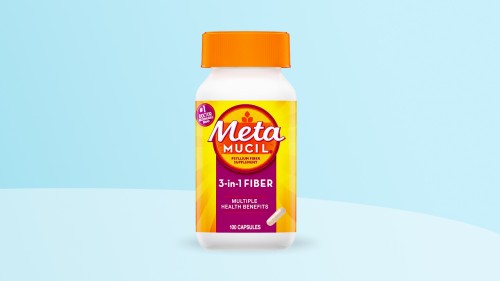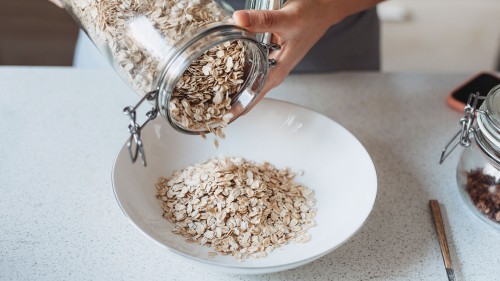Dietary Fiber: Why It Matters and How to Consume Adequate Amounts
Last Updated on January 31, 2024
Medically Reviewed by Natalie Olsen, MS, RDN
Reap digestive, weight, blood sugar & heart benefits with fiber. This article covers everything about fiber, including what it is, why it matters, the best sources, and getting enough daily.


Key Highlights
- Fiber is an essential nutrient that most people do not get enough of in their diets. Meeting daily fiber recommendations is linked to better health.
- There are two main types of fiber - soluble and insoluble. It's ideal to eat various fiber-rich foods to get both types.
- Key benefits of fiber include supporting digestive health, weight management, balanced blood sugar, heart health, and protection against some cancers.
- The best sources of fiber are whole plant foods like beans, lentils, oats, nuts, seeds, whole grains, fruits, and vegetables.
- Tips to increase fiber intake include choosing whole grains over refined options, adding beans/lentils to dishes, using nut flours in baking, eating fruit with nut butter, and adding chia seeds to yogurt.
Fiber is considered an essential nutrient, and most people are not getting enough of it.
People who eat a variety of good sources of fiber, particularly whole plant foods, tend to have a lower risk for chronic diseases like heart disease, type 2 diabetes, and certain cancers. (1)
A fiber-rich diet is also linked to improving weight and digestion. (2, 3)
Read on to learn about all things fiber, including:
- What fiber is.
- How much fiber you need daily.
- Important health benefits of fiber.
- The best sources of fiber and how to add them to your diet.
- If you should take a fiber supplement.
What Is Fiber?
Fiber is a type of carbohydrate that the body does not digest.
Other carbohydrates get broken down into glucose molecules as they pass through the digestive tract, but fiber cannot be broken down.
Instead, it passes through your intestinal tract largely unchanged but feeds good gut bacteria and offers other benefits along the way. (4, 5, 6)
There are two major types of fiber, each of which benefits the body in different ways.
- Soluble Fiber: Dissolves in water and other bodily fluids and forms a gel-like substance. Soluble fiber (such as β-glucan, inulin, and pectin) is known for its ability to lower blood sugar levels and LDL “bad” cholesterol. It also increases good bacteria in the colon and helps the body eliminate harmful substances. (7, 8)
- Insoluble Fiber: Doesn’t dissolve in water. It is best at helping move food and nutrients through your intestinal tract, promoting bowel regularity and treating both constipation and diarrhea. (9, 8)
Although nutrition facts labels do not differentiate between the two types of fiber in foods, most high-fiber foods contain a combination of both. It is best to eat a variety of high-fiber foods to get both soluble fiber and insoluble fiber in the diet.
Foods higher in soluble fiber include:
- Oats
- Peas
- Beans
- Apples
- Carrots
- Psyllium
Foods higher in insoluble fiber include:
- Whole wheat flour
- Wheat bran
- Nuts
- Vegetables like cauliflower and greens beans
Consuming a healthy balance of both types of fiber is ideal and can easily be done by eating a wide variety of fiber-rich foods.
How Much Fiber Do You Need?
Nutrition surveys have found that most people who follow a westernized diet don’t meet the minimum daily fiber recommendations.
This is largely because western diet patterns tend to be heavy in animal-derived products and ultra-processed convenience foods that lack fiber. (10)
According to the 2020–2025 Dietary Guidelines for Americans, the recommendation for daily fiber intake includes the following: (11)
| Under 50 years | Over 50 years | |
|---|---|---|
| Women | 25 grams | 21 grams |
| Men | 38 grams | 30 grams |
However, less than 5% of Americans meet these minimum daily recommendations, coming in at around 15 grams per day. (12)
Unfortunately, this isn’t a new thing. The fiber gap has been observed for decades, particularly in the United States.
As such, national nutrition campaigns like “make half your grains whole” have previously been launched by the USDA in an attempt to draw attention to the importance of fiber from whole foods.
Still, not much improvement in fiber intake has been seen. Putting more focus on this important nutrient can provide many benefits.
Health Benefits of Fiber
Getting enough fiber is a crucial piece of both acute and long-term health outcomes. (1)
While fiber is probably best known for its role in digestion, its preventive and therapeutic reach goes much further.
Furthermore, high-fiber foods are also rich in other important nutrients like vitamins, minerals, and antioxidants that support optimal health.
Decades of science show that adequate fiber intake helps reduce the likelihood of developing chronic disease. (1)
The list of conditions that fiber can have a positive effect on includes: (1)
- Certain gastrointestinal diseases
- Constipation
- Hemorrhoids
- Colon cancer
- Gastroesophageal reflux disease (GERD)
- Duodenal ulcer
- Diverticulitis
- Obesity
- Diabetes
- Stroke
- Hypertension
- Cardiovascular diseases
Some of the most well-researched health benefits of fiber are discussed below.
Supports Digestive Health
Fiber keeps your digestive system moving and supports bowel regularity by preventing constipation.
It’s also a critical nutrient for feeding your gut microbiome. The link between gut bacteria, immunity, and overall health suggests the importance of feeding your microbiome well. (13, 14).
Many of the important elements needed to create a healthy gut are highly influenced by fiber intake. These include:
- Prebiotics: Specialized plant fibers that feed good bacteria in the gut. (15)
- Probiotics: A mixture of live beneficial bacteria and yeast that provide health benefits. (16)
- Resistant Starches: Pass through the digestive tract undigested and feed good bacteria, similar to prebiotics. (17)
- Postbiotics (also called short-chain fatty acids): Fiber ferments in the colon to create postbiotics, which are anti-inflammatory and promote improved health. (18)
A 2021 study found that vegan and omnivore diets that contain many fiber-rich plant sources had a more significant impact on improving the quality and integrity of the gut microbiome than a diet without fiber. (19)
The positive impact of fiber on gut bacteria has been found in numerous other studies. (20)
Promotes Healthy Weight Maintenance
Fiber intake from healthy whole foods is inversely associated with overweight and obesity.
Eating fiber-rich foods helps promote satiety, which can curb appetite and prevent overeating that may lead to unwanted weight gain. (21)
Oppositely, low-fiber diets are associated with having higher fat mass and a higher risk for childhood obesity. (22)
A 2019 study found that fiber intake was a predictor of weight loss among overweight or obese adults, independent of overall calorie or macronutrient intake. (2)
In addition, fiber affects the production of short-chain fatty acids, which are beneficial for weight management. Short-chain fatty acids are produced from fiber fermenting in the colon.
Studies have shown that they influence the body’s ability to burn fat, lower inflammation, and affect appetite hormones. (18)
Reduces Risk for Type 2 Diabetes
Foods rich in fiber tend to result in less dramatic blood sugar and insulin responses when you eat them. Insulin is the hormone that helps balance blood sugar.
Fiber helps balance blood sugar by (23):
- Increasing feelings of fullness, which can deter overeating.
- Slowing digestion, which decreases blood sugar spikes.
- Improving the good bacteria in the gut, which is correlated with improved blood sugar.
- Binding to toxins and lowering inflammation.
Oppositely, diets that are lacking in fiber and instead based on highly refined and processed foods are associated with a higher risk for type 2 diabetes. (24)
A 2014 meta-analysis of 17 studies found that fiber intake appeared to be inversely associated with the incidence of type 2 diabetes. (25)
Furthermore, fiber can be effective in managing (and potentially even reversing) type 2 diabetes for some people. (26)
Promotes Heart Health
Cardiovascular diseases (CVD) remain the leading cause of death worldwide. The impact of fiber on cardiovascular diseases has been known for over 20 years.
One older analysis of 10 different studies showed that fiber intake could have a significant impact on decreasing the risk of coronary heart disease.
Each 10-gram-per-day increase in total daily fiber was linked to a 27% reduction in coronary-related death and a 14% decrease in the risk of all coronary events. (27)
Fiber-rich diets are associated with a lower risk for heart disease and metabolic syndrome — a state of having a cluster of risk factors that increase the susceptibility of both heart disease and diabetes. (28, 29)
Fiber is known to help reduce these risk factors, such as blood pressure, blood sugar, cholesterol, triglycerides, and abdominal obesity. (30, 31)
It also helps keep your arteries clear from plaque buildup that can lead to heart disease. (32)
Offers Anti-Cancer Benefits
High fiber consumption has a protective effect against some cancers.
Studies have found that fiber intake may be inversely associated with the risk for breast cancer, esophageal cancer, colorectal cancer, and prostate cancer. (33, 34, 35)
As fiber moves through the intestinal tract and is fermented by gut bacteria, it produces butyrate — a short-chain fatty acid thought to help prevent colon cancer. (36, 37, 38)
Best Sources of Fiber
An easy way to remember the best sources of fiber is to know that this nutrient is only found in plants.
You’ll find the most fiber in whole plant foods such as beans, peas, lentils, nuts, seeds, whole grains, fruits, and vegetables.
Here are some fantastic sources of dietary fiber and how much they offer: (39)
| Food Source | Serving Size | Amount of Fiber |
|---|---|---|
| Chia Seeds | 1/4 cup | 12 grams |
| Avocado | 1 medium | 10 grams |
| Black Beans | 1/2 cup, canned | 9 grams |
| Garbanzo Beans | 1/2 cup, canned | 9 grams |
| Lentils | 1/2 cup, canned | 7 grams |
| Brussels Sprouts | 1 cup, cooked | 6 grams |
| Apple | 1 medium | 5 grams |
| Almonds | 1 ounce | 4 grams |
| Banana | 1 medium | 3.5 grams |
| Strawberries | 1 cup | 3 grams |
| Quinoa | 1/2 cup, cooked | 3 grams |
| 100% Whole Wheat Bread | 1 slice | 3 grams |
| Broccoli | 1 cup, chopped | 3 grams |
| Carrots | 1/2 cup, chopped | 2 grams |
| Kale | 1 cup, chopped | 1 gram |
How to Increase Fiber Intake
Eating plant foods regularly (like those listed above) is the best way to meet your daily fiber needs.
Tips for Boosting Fiber Intake
- Include a piece of fruit with some nut butter for a snack.
- Buy canned beans, lentils, or chickpeas. Rinse and heat or serve cold with your favorite dishes. Flavor with salsa or spices.
- Use a pressure cooker to batch-cook dry beans, lentils, or chickpeas for the week to add to salads, bowls, or use as a side dish.
- Bulk up meat sauces and dishes with legumes. Replace a third or up to half the meat in a recipe with cooked lentils or beans.
- Enjoy healthy whole-grain snacks like popcorn, puffed whole wheat, and whole-grain crackers.
- Switch to 100% whole-grain bread varieties to replace white bread.
- Choose brown rice or whole-grain noodles over white rice and rice noodles. Quinoa substitutes well for Asian porridge recipes or rice.
- Use oat flour, oat bran, or rolled oats to add fiber to baked goods. Replace 1/3 of flour with oat flour or rolled oats in a recipe, or 3/4 cup flour and 1/4 cup oat bran for every 1 cup of flour called for in a recipe.
- Try black bean, lentil, chickpea, quinoa, or edamame-based pasta varieties to replace white pasta. Pair with tomato sauce and veggies of your choice.
- Include hummus and avocado spread on a sandwich in place of traditional mayonnaise.
- Choose smoothies with whole fruits and veggies instead of juicing, which removes all the fiber.
- Add chia seeds and berries to yogurt.
- Add crunch and extra flavor to salads, soups, noodles, and pasta by topping them with nuts and seeds.
- Use psyllium husk instead of flour to thicken soups. Use 1–2 tablespoons of psyllium per 4 cups of soup. You can mix it into the soup while cooking, or stir it in while it is still hot after cooking.
Tips for Reducing Digestive Side Effects of Fiber
Note that if you haven’t been used to eating many fiber-rich foods until now, it may be a good idea to gradually increase your intake.
Some people report experiencing digestive side effects such as gas, bloating, and abdominal cramping after boosting their fiber intake too quickly. You can decrease the amount you eat in one setting and slowly increase it as your body gets used to it.
If you find that eating more fiber brings about unpleasant digestive symptoms, it may also help to drink more water to move fiber through your intestinal tract smoothly.
This has been seen in studies among people with constipation, where the condition has been best alleviated by a combination of fiber and increased water intake. (40)
Should You Take a Fiber Supplement?
There are countless fiber supplements on the market, and you may be wondering whether you should take one to help meet your daily needs.
Fiber supplements can be beneficial in certain instances, such as for helping to gently treat acute bouts of constipation or diarrhea.
However, keep in mind that fiber supplements may reduce the absorption of certain medications and should therefore be taken a couple of hours away from medications.
They may also lower blood sugar levels, which could be problematic if you use medications to manage diabetes. It’s best to speak with your doctor before using a fiber supplement in either of these cases.
Overall, supplements are not meant to provide all your daily fiber needs. It is best to get fiber through foods. Although supplements are not necessary, they may be used in addition to a healthy, whole foods diet.
It is important to note that fiber supplements will not contain the health-promoting vitamins, minerals, and antioxidants that whole plant foods provide.
The Bottom Line
Fiber is an important nutrient that most people aren’t getting enough of in their diet. It helps promote bowel regularity and is known to reduce the risk of several chronic diseases.
Fortunately, it’s easy to add more fiber to your diet by adding more whole plant foods — like legumes, grains, nuts, seeds, fruits, and vegetables.
At WellnessVerge, we only use reputable sources, including peer-reviewed medical journals and well-respected academic institutions.
- Health effects of dietary fiber - PubMed:
https://pubmed.ncbi.nlm.nih.gov/24876314/ - Fiber Intake Predicts Weight Loss and Dietary Adherence in Adults Consuming Calorie-Restricted Diets: The POUNDS Lost (Preventing Overweight Using Novel Dietary Strategies) Study - PubMed:
https://pubmed.ncbi.nlm.nih.gov/31174214/ - The behavior of dietary fiber in the gastrointestinal tract determines its physiological effect – Taylor & Francis Online:
https://www.tandfonline.com/doi/full/10.1080/10408398.2016.1180501 - Changes in dietary fiber intake in mice reveal associations between colonic mucin O-glycosylation and specific gut bacteria – Taylor & Francis Online:
https://www.tandfonline.com/doi/full/10.1080/19490976.2020.1802209 - Dietary Fiber, Atherosclerosis, and Cardiovascular Disease - PubMed:
https://pubmed.ncbi.nlm.nih.gov/31126110/ - Fiber | The Nutrition Source | Harvard T.H. Chan School of Public Health:
https://www.hsph.harvard.edu/nutritionsource/carbohydrates/fiber/#:~:text=Fiber%20is%20a%20type%20of,passes%20through%20the%20body%20undigested. - Effects of soluble dietary fiber on low-density lipoprotein cholesterol and coronary heart disease risk - PubMed:
https://pubmed.ncbi.nlm.nih.gov/18937894/ - Dietary fiber: Essential for a healthy diet - Mayo Clinic:
https://www.mayoclinic.org/healthy-lifestyle/nutrition-and-healthy-eating/in-depth/fiber/art-20043983 - Difference Between Soluble & Insoluble Fiber – Cleveland Clinic:
https://health.clevelandclinic.org/whats-the-difference-between-soluble-and-insoluble-fiber/ - Westernized Diet is the Most Ubiquitous Environmental Factor in Inflammatory Bowel Disease - PubMed:
https://pubmed.ncbi.nlm.nih.gov/30624192/ - Dietary Guidelines for Americans 2020-2025:
https://www.dietaryguidelines.gov/sites/default/files/2020-12/Dietary_Guidelines_for_Americans_2020-2025.pdf - Perspective: Closing the Dietary Fiber Gap: An Ancient Solution for a 21st Century Problem - PubMed:
https://pubmed.ncbi.nlm.nih.gov/27422499/ - The Impact of Dietary Fiber on Gut Microbiota in Host Health and Disease - PubMed:
https://pubmed.ncbi.nlm.nih.gov/29902436/ - The Gut Microbiota and Inflammation: An Overview - PubMed:
https://pubmed.ncbi.nlm.nih.gov/33086688/ - Prebiotics, probiotics and your health - Mayo Clinic:
https://www.mayoclinic.org/prebiotics-probiotics-and-your-health/art-20390058 - Probiotics: What You Need To Know – NIH:
https://www.nccih.nih.gov/health/probiotics-what-you-need-to-know - WHAT IS RESISTANT STARCH? – The John Hopkins Patient Guide to Diabetes:
https://hopkinsdiabetesinfo.org/what-is-resistant-starch/ - The role of short-chain fatty acids in health and disease - PubMed:
https://pubmed.ncbi.nlm.nih.gov/24388214/ - Role of dietary fiber in the recovery of the human gut microbiome and its metabolome - PubMed:
https://pubmed.ncbi.nlm.nih.gov/33440171/ - The Food-gut Human Axis: The Effects of Diet on Gut Microbiota and Metabolome - PubMed:
https://pubmed.ncbi.nlm.nih.gov/28462705/ - Dietary fiber and weight regulation - PubMed:
https://pubmed.ncbi.nlm.nih.gov/11396693/ - Energy-dense, low-fiber, high-fat dietary pattern is associated with increased fatness in childhood - PubMed:
https://pubmed.ncbi.nlm.nih.gov/18400706/ - Fiber: The Carb That Helps You Manage Diabetes | Diabetes | CDC:
https://www.cdc.gov/diabetes/library/features/role-of-fiber.html#:~:text=Health%20Benefits%20of%20Fiber&text=Specifically%2C%20fiber%20can%20help%3A,sugar%20in%20your%20target%20range. - Death by Carbs: Added Sugars and Refined Carbohydrates Cause Diabetes and Cardiovascular Disease in Asian Indians - PubMed:
https://pubmed.ncbi.nlm.nih.gov/30228507/ - Dietary fiber intake and risk of type 2 diabetes: a dose-response analysis of prospective studies - PubMed:
https://pubmed.ncbi.nlm.nih.gov/24389767/ - Dietary fiber for the treatment of type 2 diabetes mellitus: a meta-analysis - Database of Abstracts of Reviews of Effects (DARE): Quality-assessed Reviews - NCBI Bookshelf:
https://www.ncbi.nlm.nih.gov/books/NBK92583/ - Dietary Fiber and Risk of Coronary Heart Disease: A Pooled Analysis of Cohort Studies | Cardiology | JAMA Internal Medicine | JAMA Network:
https://jamanetwork.com/journals/jamainternalmedicine/fullarticle/216689 - Dietary Fiber, Atherosclerosis, and Cardiovascular Disease - PMC:
https://www.ncbi.nlm.nih.gov/pmc/articles/PMC6566984/ - A new look at dietary fibers in metabolic syndrome - PubMed:
https://pubmed.ncbi.nlm.nih.gov/30701880/ - Effects of dietary fibre type on blood pressure: a systematic review and meta-analysis of randomized controlled trials of healthy individuals - PubMed:
https://pubmed.ncbi.nlm.nih.gov/25668347/ - Lipid Lowering with Soluble Dietary Fiber - PubMed:
https://pubmed.ncbi.nlm.nih.gov/27807734/ - Dietary fiber and risk of coronary heart diseases – GSC Online Press:
https://gsconlinepress.com/journals/gscarr/sites/default/files/GSCARR-2021-0280.pdf - Fiber consumption and breast cancer incidence: A systematic review and meta-analysis of prospective studies - PubMed:
https://pubmed.ncbi.nlm.nih.gov/32249416/ - Dietary fiber intake reduces risk for Barrett's esophagus and esophageal cancer - PubMed:
https://pubmed.ncbi.nlm.nih.gov/26462851/ - Fiber Intake and Survival After Colorectal Cancer Diagnosis - PubMed:
https://pubmed.ncbi.nlm.nih.gov/29098294/ - Fiber-derived butyrate and the prevention of colon cancer - PubMed:
https://pubmed.ncbi.nlm.nih.gov/9384528/ - Butyrate and colorectal cancer: the role of butyrate transport - PubMed:
https://pubmed.ncbi.nlm.nih.gov/24160296/ - Frontiers | Butyrate Suppresses Glucose Metabolism of Colorectal Cancer Cells via GPR109a-AKT Signaling Pathway and Enhances Chemotherapy:
https://www.frontiersin.org/articles/10.3389/fmolb.2021.634874/full - Foundation Foods – FoodData Central:
https://fdc.nal.usda.gov/fdc-app.html#/ - Water supplementation enhances the effect of high-fiber diet on stool frequency and laxative consumption in adult patients with functional constipation - PubMed:
https://pubmed.ncbi.nlm.nih.gov/9684123/






